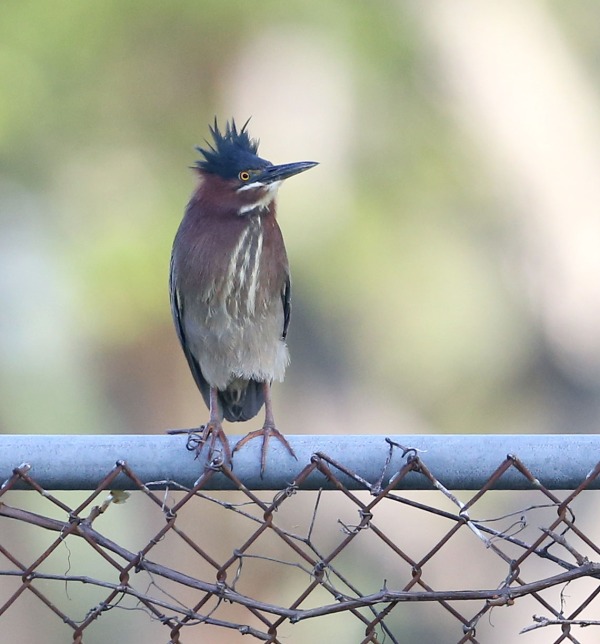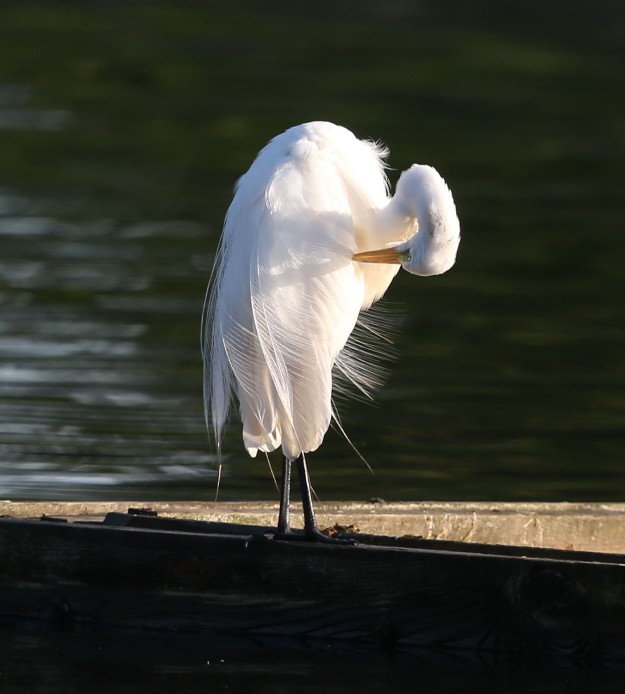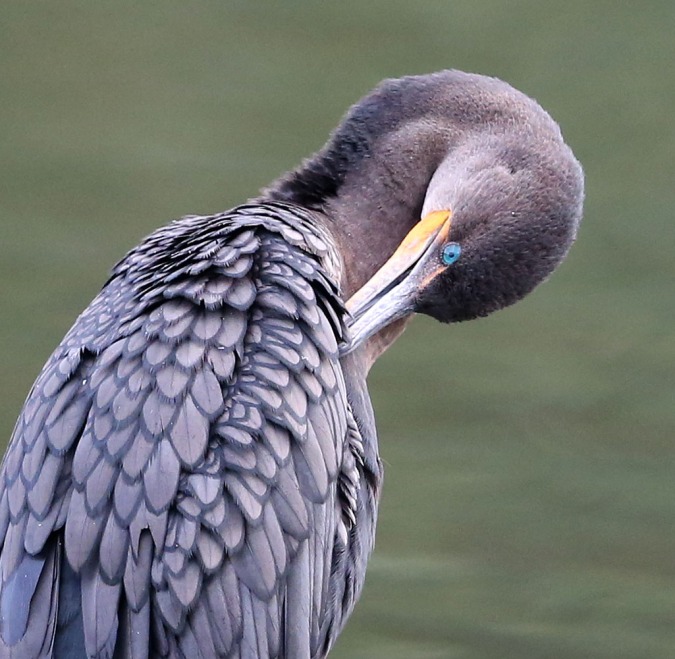Hi, everyone. I haven’t written anything in a while because my wife and I are selling/moving/house-hunting. The process is all-consuming, as many of you know. We’re leaving southeastern Virginia and heading to central PA. We’re heading for the hills. At some point, I’ll have to change the name of the blog. I’m considering “Susquehanna River Bird Blog” and “Yellow Breeches Creek Bird Blog.” “Gifford Pinchot Lake Bird Blog” is also a possibility. Here’s how I look most days. A little frazzled and a bit unsure.

But I have to remind myself to just keep putting one foot in front of the other,

and that it’s always forward, never back.

Bird Photography Tips
I often delve into photography in these posts, and I’ll do so again here. We’ll look at some great photo tips as well as touching on ISO and continuous autofocus (continuous AF).
Like many of you, I love taking pictures of wildlife—especially birds. And I take the endeavor seriously. I think of an email I just received from KEH Camera, a GA-based used photo gear supplier. This was the subject line: “Are your photos inspired? Or just tired?” I want mine to be the former. I think of another email KEH sent with this subject line: “Create images that carry the viewer away.” For me, that’s always the goal.

I mentioned the work of “wildlife biographer” Melissa Groo in “Birds’ Stories.” Here are some of the points she made in a recent article she wrote for Outdoor Photographer. I hope you find them helpful.
- The quality of your lens is paramount.
- Ditch the UV filters. Filters degrade image quality.
- Use a tripod and head if you’re working with a long lens. Don’t skimp on the purchase of either.
- As much as you can, use Single Point AF. And target the eye.
- Find and use your lens’ “sweet spot.”
- Shoot at the highest possible shutter speed. Use at least 1/1600 sec for birds in flight, but consider faster speeds, even up to 1/3200 sec (or faster).
- Don’t be afraid of high ISO shots.
- Use burst mode and your camera’s continuous autofocus mode (AI Servo/AF-C). Use the latter even if a bird is perched.
- Look beyond technical perfection. A photo that isn’t tack sharp can still make a powerful statement.
I love her concluding remark: “Don’t overlook a marvelous storytelling photo or a uniquely artistic style simply because it might exhibit less-than-perfect crispness.”

You’ll note that the adult Canada Goose is far from “crisp.” BTW, folks on Facebook enjoyed this photo. One viewer responded, “I can see why it’s called goose-stepping!”
High ISO
Melissa mentioned high ISO shots. Let’s touch on that briefly. Here’s an abridged version of something I wrote in “Life and Beauty“: “Never be afraid to crank up the ISO if you need to. What’s most important is shutter speed/sharpness. A noisy photo is preferable to one that is soft.” Ms. Groo put it this way: “Noisy and sharp are way better than clean and fuzzy.”

I captured this bird in the Indian River Park woods @ ISO 25600. The photo epitomizes “noisy and sharp.” Here’s another (less) noisy and sharp one. I captured this bird a full stop lower @ 12800 ISO. I was out in the open, but it was cloudy and drizzly.

If I had a nickel for every time I photographed a bird on a chain-link fence, barbed wire, power line, or cable, I’d be rich. I’ve actually toyed with the idea of creating a photobook with some of those images. I’d call it Birds and Barbed Wire.
Continuous Autofocus
Let’s touch on (and wrap up with) another of Melissa’s points—using continuous AF for static subjects. It’s a must if the subject is close, you’re hand-holding, and you’re using a wide aperture with a shallow depth of field. A pro recently told me that in that situation any tiny movement can shift the plane of focus even if the subject is completely frozen. Regarding shooting other static subjects, the consensus seems to be that continuous AF should be used 99% of the time. Keep in mind that subjects and photographers are always moving, even if only slightly.

In the above photo, dad was showing his daughter the pond at Lakeside Park in Chesapeake, VA for the first time. I was nearby and couldn’t resist. And yes, I used AI Servo.
And This Just In
If you’re wondering what “the quality of your lens is paramount” means, here’s a thoughtful piece that explains.
We visited a local restaurant recently. “Drakes” and “Hens” appeared on the bathroom doors. Even though I’m an experienced birder, I had to stop and think each time I approached those doors. Which one do I open? I learned before leaving that guests get confused all the time. No wonder.

Quip, Question, Quote
Jean Mackay has a wonderful art and nature blog, “Drawn In,” complete with tips and techniques. I responded to her late 2/21 blog “Day After Day” this way: “Jean, you really captured late February in your sketch. Nice job. You do with your pens, pencils, brushes, and paints what I try to do with my camera.”

Thank you for reading. And a belated Happy Father’s Day to all you dads out there.
Well, I’ll miss knowing you are just around the bend in the trail, or unseeable through the phragmites, but happy for you that you’re making a move you’ve undoubtedly thought long and hard about. Through the beauty of the internet I know I will still enjoy your blog, and I thank you.
I’m in the throes of moving myself (just across town). It’s exhausting and I’m frazzled along with you.
Happy birding!
Chris Birdsong
On Mon, Jun 21, 2021 at 5:06 PM Elizabeth River Bird Blog wrote:
> Dave Gibson posted: “Hi, everyone. I haven’t written anything in a while > because my wife and I are selling/moving/house-hunting. The process is > all-consuming, as many of you know. We’re leaving southeastern Virginia and > heading to central PA. We’re heading for the hills. At s” >
LikeLike
Christina, what a wonderful comment. I always enjoy hearing from you and wish you the best with your move. Happy birding to you, as well.
LikeLike
I enjoyed this post, and I know I need to take away anything I can when photo tips are shared. I was happy to see I was already following a couple of them! Love the cormorant and the song sparrow! I am also learning that a photo can be great even when not perfect. I take lots of not perfect ones 😊
LikeLike
Thanks for reading, Lisa.
LikeLiked by 1 person
David,
Thank you for posting this. It was a great read. Very informative. Lately, I have been “struggling” with high ISO photos because I’m not pleased with the grainy outcome. But, I find a high ISO is sometimes needed because of the low or poor light and / or my subject is in the canopy. This article is a reminder to focus on capturing the moment and is one I will reread more than once. Godspeed on your move to the hills of PA. Cheers!
LikeLike
Thanks, Bill. You’re right about capturing the moment. Those moments are fleeting, and if we worry too much about ISO, we miss them and they’re gone. Also, appreciate your sentiment at the end.
LikeLike
Lovely photos, Dave. I have been trying out AFC lately. I’m not sure about it. Early days.
Is PA Pensylvania? I know nothing about it. It will be nice to see whether it changes your photography at all. Best wishes for your move, Dave.
LikeLike
Thanks, Tracy. BTW, I think I’ve misspelled your name a few times. PA is Pennsylvania. (I’m supposed to spell things out, but I don’t always do so.) And PA can be hilly, compared to VA’s coastal plain. Hope all is well Down Under!
LikeLiked by 1 person
Hi Dave, don’t worry about spelling my name wrong. It often happens and doesn’t me. I didn’t spell Pennsylvania correctly either. All okay here at the moment, although quite cold and wet.
I’ve lived inland most of my life so naturally I prefer it. It is more difficult to capture photos of little birds darting through heavy woodland though. I am sure you will enjoy that challenge, Dave.
LikeLike
A series of lovely photos 🙂
LikeLike
Approved…and thanks so much!
LikeLike